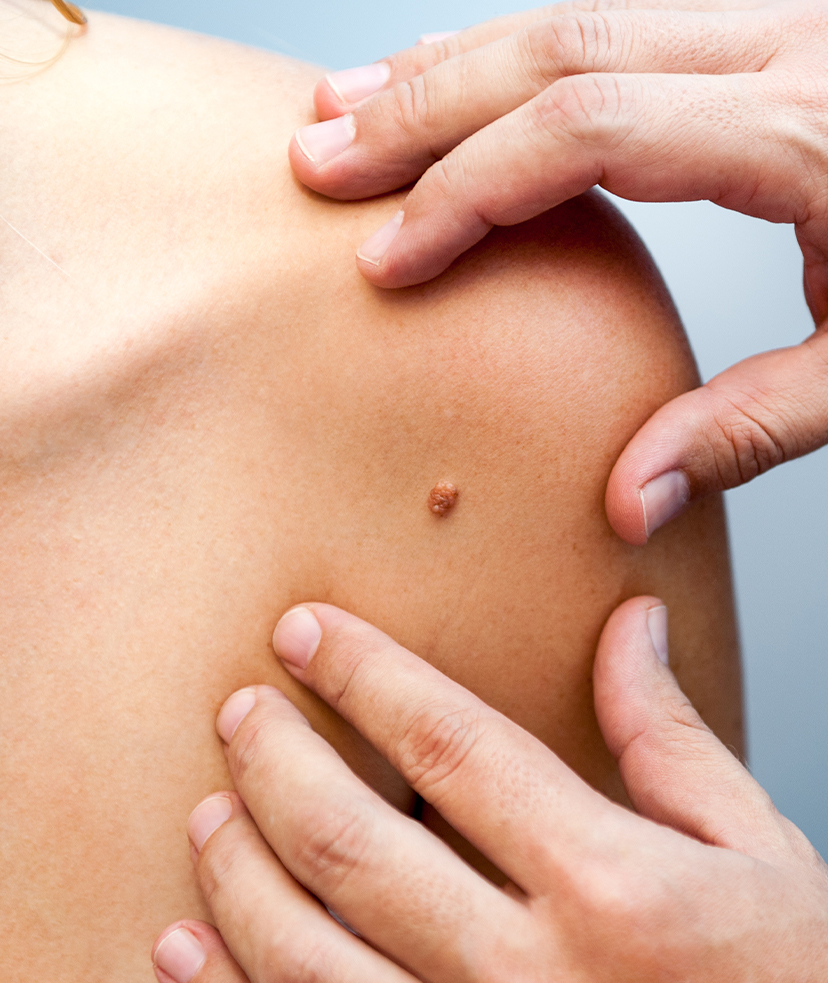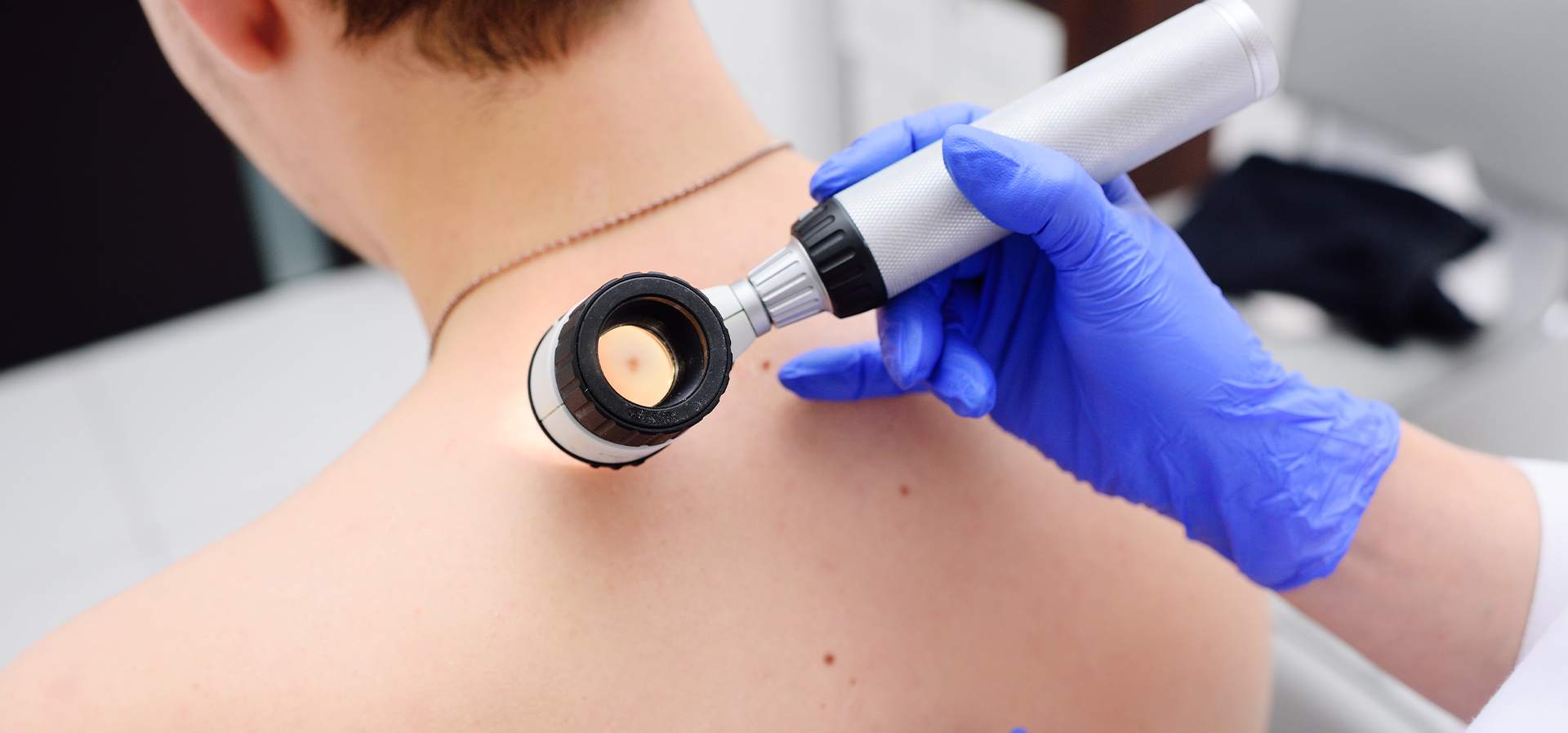A skin cancer diagnosis can be one of the hardest things to grapple with. This disease often comes as a surprise and can leave you feeling afraid and hopeless. However, treatments for skin cancer have advanced to the point of helping you live cancer-free quickly. At McLean & Potomac Dermatology, we offer excision and testing services to remove cancerous growths from your body and help you recover. Schedule a consultation at one of our locations today to learn more.
What Causes Skin Cancer?
Skin cancer is one of the most common cancers in the United States, and several factors can contribute to developing this disease. This includes sun exposure and genetics, among others.
At the very core, skin cancer is an uncontrollable growth of mutated skin cells. This occurs when a skin cell becomes mutated by UV radiation or other factors. Typically, a damaged cell will simply die and will no longer divide – it’s the body’s natural defense against such situations. However, in some instances, the mutated cell will not die but will instead continue to divide, with the mutation passed on to the new cells.
These mutated skin cancer cells will eventually grow in a cluster that becomes a tumor. At this point, most types of skin cancer can still be treated effectively, with high success rates. However, if untreated, the cancerous cells may eventually reach the lymph nodes, passing the mutated cells to other body parts. In this way, the cancer will travel to other organs, where the damaged cells will continue to grow and create more tumors.

What Are the Types of Skin Cancer?
Actinic Keratosis
Actinic Keratoses, (AK’s) are pre-cancerous skin lesions that typically occur on body parts that are most often exposed to the sun. They usually appear as small crusty, scaly, or crumbly bumps or horns. Early on, they may come and go. Sometimes they are more easily detected by feel than by sight. If untreated, AK’s can turn into Squamous Cell Carcinomas.
Basal Cell Carcinoma
Basal cell carcinoma (BCC) is one of the most common skin cancers. BCC is caused by long-term sun exposure. In addition, basal cell carcinoma sometimes resembles non-cancerous skin conditions such as acne pimples, psoriasis, or eczema. If you have unusual spots that have been present for more than one month, you should have them evaluated for skin cancer surveillance.
Squamous Cell Carcinoma
Squamous cell carcinoma (SCC) is the second most common skin cancer after basal cell carcinoma. They usually appear as thick, rough, scaly patches that may bleed easily. They often look like warts and sometimes appear as open sores. The skin around the site may exhibit signs of wrinkling, pigment changes, and loss of elasticity. While these lesions may also be slow-growing and do not heal independently, some types of SCC may develop very quickly.
Melanoma
Melanoma is the most serious form of skin cancer. Even so, if diagnosed and removed while it is still thin and limited to the outermost skin layer, it is almost 100% curable. Once the cancer advances and spreads to other body parts, it is hard to treat and can be deadly. We recommend regular self-skin exams to keep track of any changing or new skin lesions on your body. Specifically, we advise you to look out for the ABCDEs of melanoma.
- A – Asymmetry: If you draw a line through a mole and the two halves do not match, it is asymmetrical, a warning sign for melanoma.
- B – Border: The borders of early melanoma are often uneven. The edges may be scalloped or notched.
- C – Color: Moles with various colors is another characteristic of melanoma. Melanoma can be different shades of brown, tan, or black; melanomas can also become red, white, or blue.
- D – Diameter: The diameter of melanomas is usually larger than a pencil eraser but can also be smaller.
- E – Evolving: If a mole is evolving (changing), have it evaluated by your dermatologist. Changes in size, shape, color, elevation, and the tendency to bleed, itch, or crust are signs of melanoma.
How We Address Skin Cancer
Everyone should have a skin exam for skin cancer surveillance annually; however, if you have a personal or family history of skin cancer, you may be advised to have skin checks every 3-6 months. Full checks are thorough but painless! Our providers will look at each mole with a special microscope and will discuss the treatment options for any concerning moles with you. Typically an excision procedure is needed if the mole appears irregular. The excised area is sent for testing to ensure all of the cancer is removed.
Find Skin Cancer Treatments in McLean, VA, or Potomac, MD
If you have an irregular mole, it’s important to check in as soon as possible. At McLean & Potomac Dermatology, we can evaluate your mole to determine if there is a risk of it being or becoming cancerous. Contact one of our offices today to receive the expert dermatological treatment you deserve.
You can reach us by messaging us through the Klara app on this website or giving us a call at (703) 356-5111.


